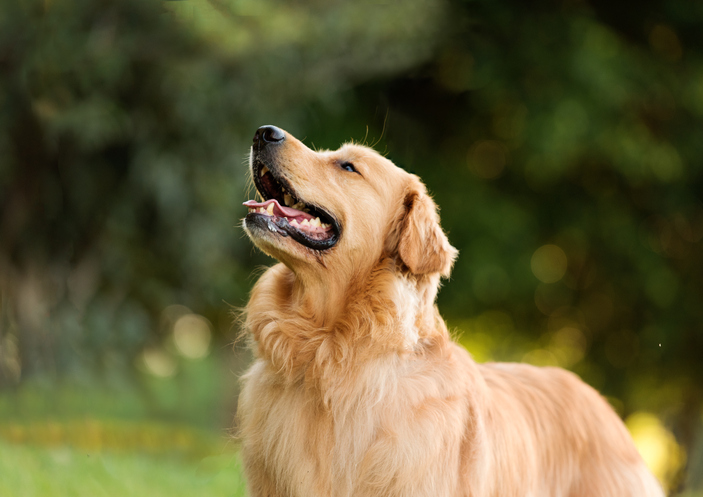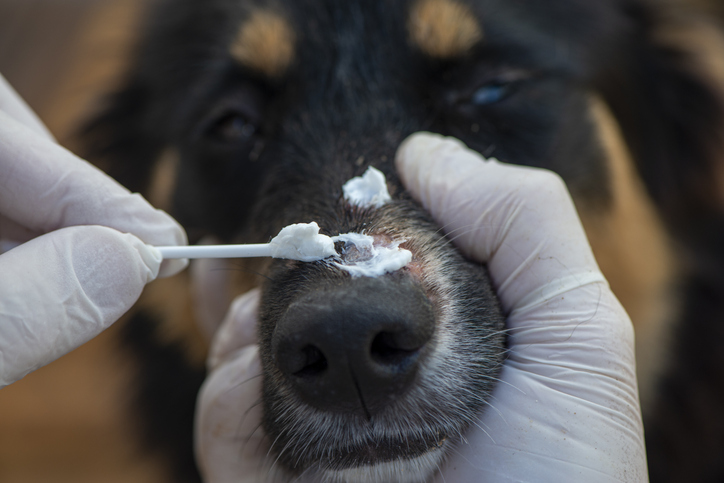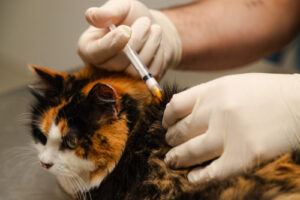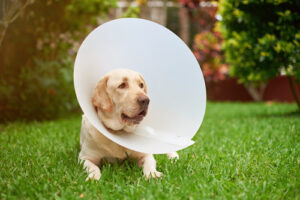Pimples on Dogs: Causes, Symptoms, and Treatment
Nothing is worse than spotting a pimple on your face as you are about to leave the house. Insecurities aside, dogs can also develop acne, which forms on their face the same way in humans.
Dogs can get pimples from dirt, oil, and debris accumulating on their skin. Some common symptoms of acne in dogs include redness, swelling, pustules, and cysts. Your veterinarian can give your pup topical creams or shampoos to help decrease inflammation and clear up the pimples.
You can prevent pimples on your dog by making a face cleaning part of their grooming ritual. If you want to know more about pimples on dogs, the symptoms, and how to treat them, read on.

What Causes Pimples on Dogs?
Like us, dogs have follicles that have sebaceous glands that create and secrete an oil. This oil lubricates and safeguards the skin, keeping it from drying out. Sometimes these follicles become clogged, and sebum cannot be eliminated. The gland fills up with the trapped oil in the skin and forms what we call pimples, acne, or zits. You may be wondering if dogs get pimples for the same reasons we do.
Breed Predisposition
Dog acne is characterized by the formation of reddish bumps, most often seen on the chin. Short-haired breeds are more commonly known to get pimples. Some breeds, such as the ones listed below, break out more frequently and are more susceptible to little bumps and pimples.
- Doberman Pinschers
- English Bulldogs
- Great Danes
- Boxers
Sometimes, acne occurs in breeds like Bulldogs when the dirt and debris accumulate on the skin. Hairless varieties, such as the Chinese Crested and Mexican Hairless, also develop pimples more frequently because they have abnormal hair follicles.
Dirt, Oil, and Debris

When dirt, oil, and debris build up on the skin, it can cause acne in dogs. The bacteria gets congested in the pores, so wiping your pup in sensitive areas, like the face, chest, and paws, is always recommended. Food or water bowls may cause bacteria to get on your dog and form pimples.
Trauma to the Skin
Trauma to the skin can occur from a rigorous play session with another dog or pet in the home. It could also be an injury to the skin that causes fur breakage and inflammation within the hair follicle. It leads to the rupture of follicles, and the contents come out onto the skin, perpetuating inflammation and creating more pimples.
Underlying Medical Conditions
Some dogs develop pimples from underlying health issues. Pet allergies can sometimes cause pimples, but they are more likely to cause hives and itchy skin. Some common illnesses that can cause acne in dogs include:
- Infections (skin mites)
- Bacterial infections
- Yeast infections
- Cushing’s disease
If dogs get pimples due to allergies, it can be because of allergies pertaining to food and the environment. It can sometimes also be caused by hormonal changes in the pup. If you see any changes in your dog’s skin, it is best to get them to see the vet to rule out any medical conditions.
Some Other Causes of Pimples in Dogs
There are a few other causes of pimples in dogs that are less common. Sometimes there are underlying skin conditions. The following are some possibilities:
- Demodicosis signs include hair loss, scaling, and redness
- Dermatophytosis is a superficial fungal skin disease
- Neoplasia is an abnormal growth of cells in the body
- Malassezia dermatitis presents with itchy, scaly, inflamed skin
Sometimes, a dog can respond to fleas with the presence of redness, pimples, bumps, or scabs. It causes dogs to itch and scratch themselves incessantly.
What Are the Symptoms of Pimples in Dogs?
Dogs will typically have acne form on their chin and lip area. Just like humans can get blackheads and whiteheads, so can dogs. The following include some of the symptoms of pimples in pups:
- Redness
- Bleeding
- Swelling
- Nodules
- Infection
- Pustules
- Sebaceous cysts
- Raised areas of skin tissue
Dogs who are afflicted with acne sometimes have itchy skin. The pup may be seen scratching the area or trying to rub against furniture or other objects with their face in an effort to relieve the itchiness.
Sometimes pups with pimples may have pain from the acne or scars on their skin. There may also be ulcerated lesions with or without discharge.
How to Treat Pimples in Dogs

Treatment for canine acne tends to be relatively straightforward. Oral medication may also be used to decrease inflammation and combat any bacterial infection. Your veterinarian may prescribe medicated topical therapy such as:
- Cleansers
- Creams
- Shampoos
- Wipes
Antibiotics, antifungals, and anti-inflammatories may also be involved in treatment. Do not use over-the-counter human anti-acne products on your dog’s skin, as they may be too intense for your pup to handle. However, there are a couple of other possibilities for helping to treat canine acne.
Warm Compress
You can use a warm compress on the areas that require treatment. Grab a towel or a washcloth and warm up a small bowl filled with water. Make certain the compress is not too hot. Dip the washcloth into the warm water. Gently place the washcloth over the area with the pimple and hold it there for about fifteen seconds.
The heat from the compress will open the pores, which can help the pimple come to the skin’s surface. If your pup is experiencing pain from their acne, the warm compress can also help to decrease pain. The acne may clear up if you do these two to three times a day for about one week.
Oatmeal Bath
Oatmeal baths can help soothe skin irritation, as the plant compounds in oats will act as an anti-inflammatory and decrease redness. It will also naturally moisten your dog’s skin and provide relief. Oatmeal baths are suitable for dogs, as they can:
- Relieve itching
- Heal dry skin
- Remedy rashes
- Ease hot spots
- Treat acne
Oatmeal baths have also been known to treat flea and tick infestation. With acne, oatmeal works as an exfoliant to remove dead skin cells, which can improve the condition of your dog’s skin. Oatmeal leaves the coat of your dog soft, supple, and clean.
How To Prevent Dog Acne
You can do some things to assist with preventing your dog from getting pimples in the first place. Clean your pup’s face and folds and slough the dirt off that can create pimples. There are special wipes you can get to clean your dog’s face. Veterinarians approve of these wipes, and they work wonders. A company called NurtiPaws makes facial wipes for dogs and cats.
Use stainless steel or ceramic food and water bowls and throw out the plastic ones, as they can trigger acne and flare-ups, as some pups have contact allergies to plastic. Bacteria or yeast can also reside in the scratches of plastic food and water bowls. Stainless steel bowls are simpler to clean and do not typically hold on to bacteria. Most of them are also dishwasher-safe, which is a nice bonus.
Conclusion
Dogs can get pimples the same way we do, as they form from congested pores. Acne in dogs will commonly occur on the pup’s chin or lip. It is essential to clean or wipe your dog’s face to help prevent the development of acne. If you notice that your canine companion has pimples and want to help, contact your veterinarian, who can give them special treatments to help clear it up.
Do you have any further questions regarding acne and your canine? Loveland Regional Animal Hospital in Loveland, OH is here to help! Give us call at (513) 697-9796 or make an appointment online today!




